Captured German Combat Map of 'Commercy 52B' France Sector

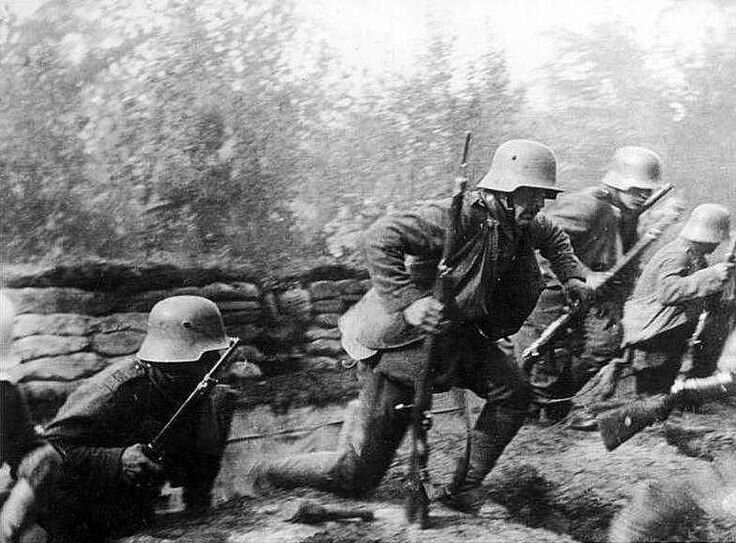
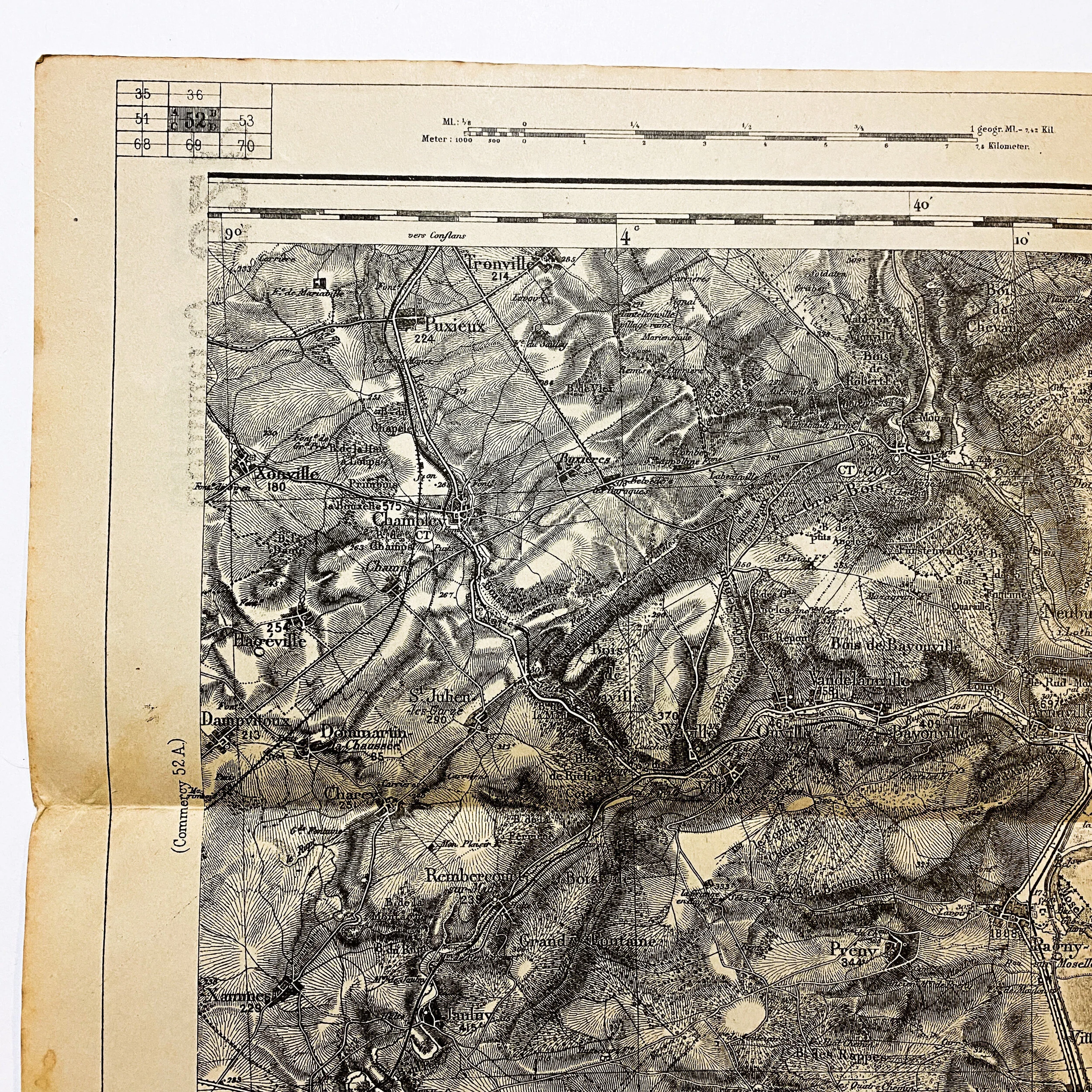
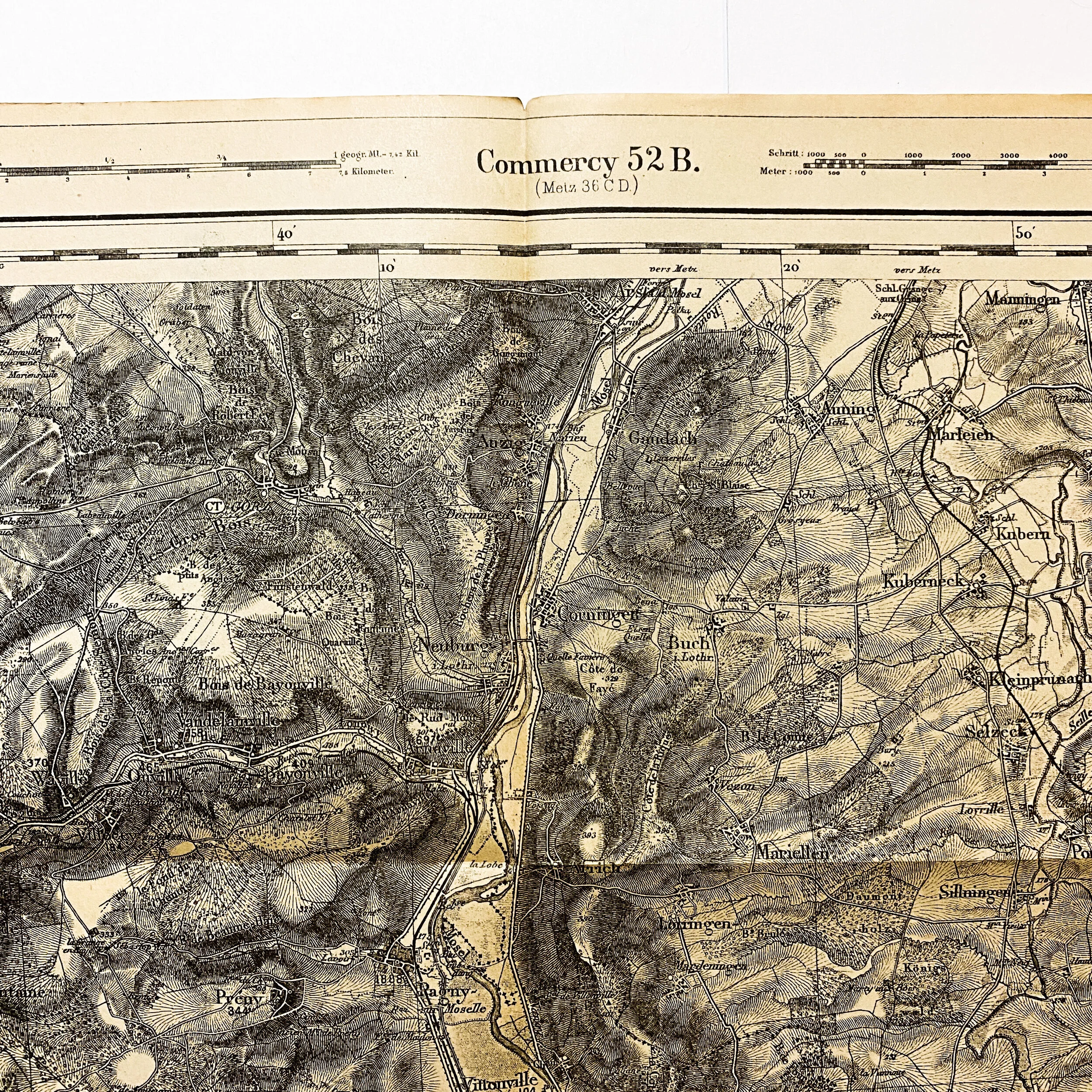

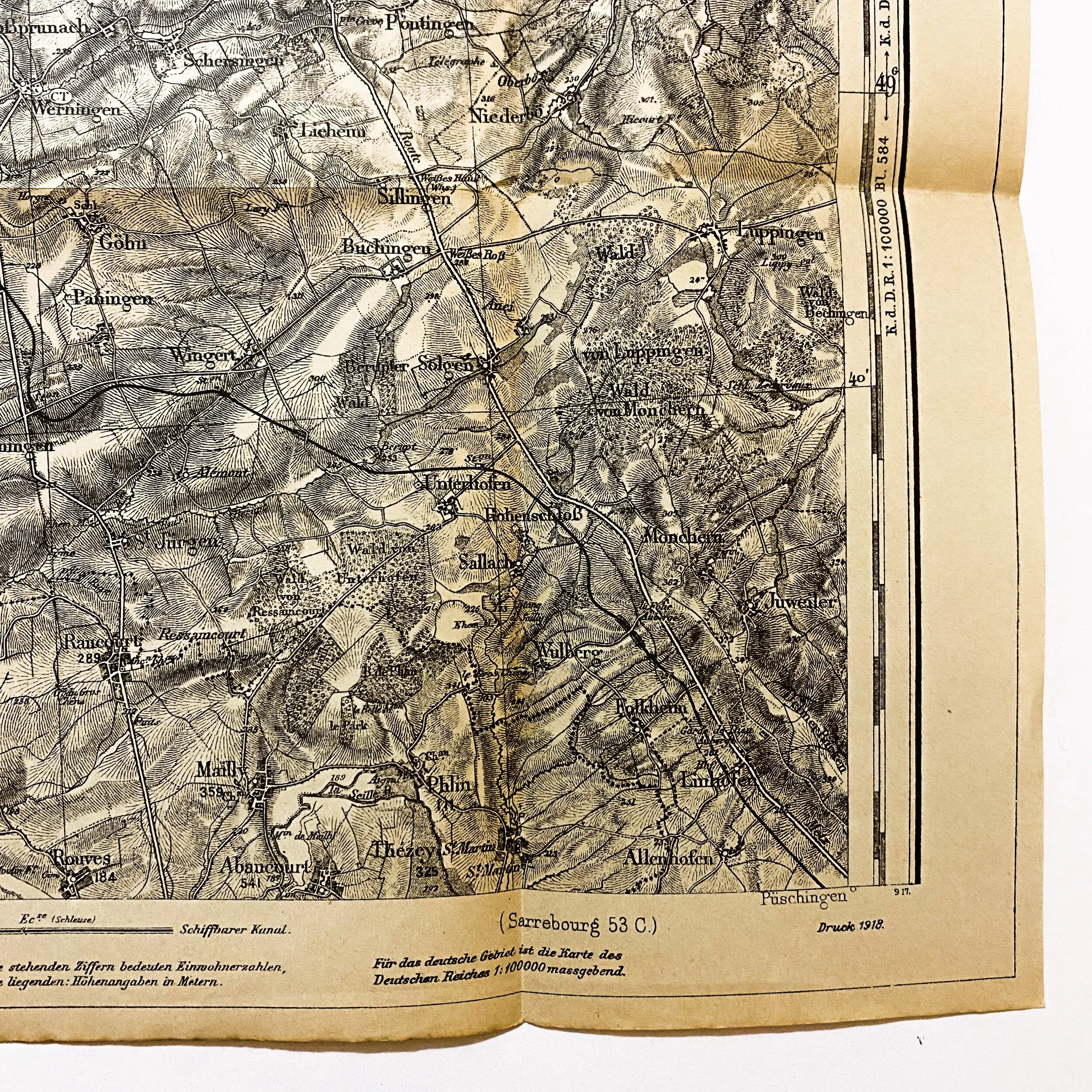



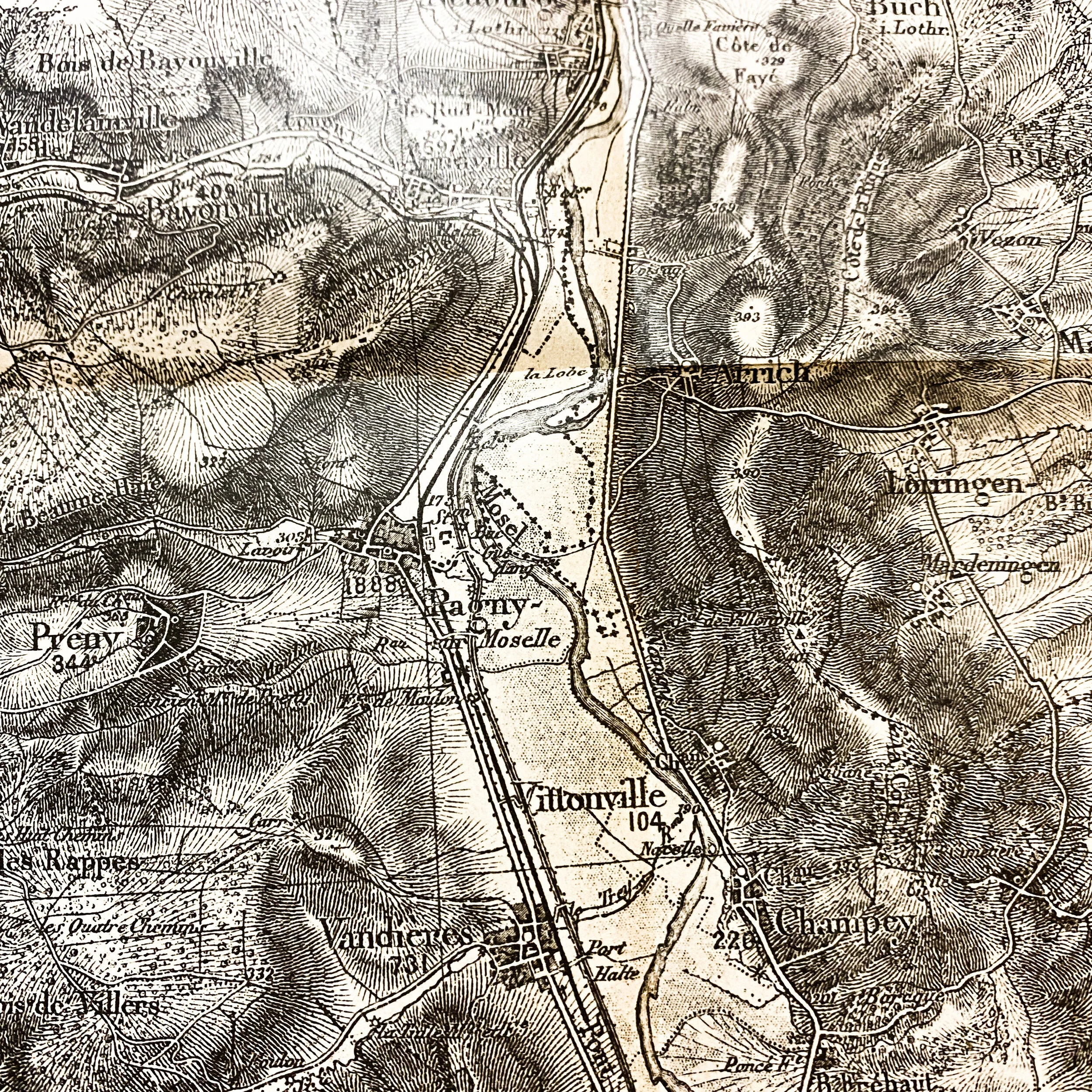



Captured German Combat Map of 'Commercy 52B' France Sector
Size: 22.25 x 12.25 inches
This is an original WWI German combat map of the ‘Commercy’ France sector. This map is one of 45 taken off of a German major on the battlefield of ‘Rupt en Weurve’ in the St. Mihiel (Commercy) Sector on September 13th, 1917 by Lieut. Harry G. Sheldon of the A.E.F. forces. These maps are broken into sets of 4 being label A,B,C and D of each given sector and district. Putting these section together forms a large map. They are all common scale and can be placed side by side to fit. This map is labeled ‘Commercy 52B’ and is 1 of 4 maps for this given sector.
This map was most likely used during the Meuse–Argonne offensive as it features notable battle locations such as the Thiaucourt, Vieville, and Kessenach.
Meuse–Argonne Offensive:
The Meuse–Argonne offensive was a major part of the final Allied offensive of World War I that stretched along the entire Western Front. It was fought from September 26, 1918, until the Armistice of November 11, 1918, a total of 47 days. The Meuse–Argonne offensive was the largest in United States military history, involving 1.2 million American soldiers. It is the second deadliest battle in American history, resulting in over 350,000 casualties including 28,000 German lives, 26,277 American lives and an unknown number of French lives.
The logistic prelude to the Meuse attack was planned by then Colonel George Marshall who managed to move American units to the front after the Battle of Saint-Mihiel (Saint-Mihiel is a town on the river Meuse, the most important water obstacle on the Western Front. The September/October Allied breakthroughs (north, center, and east) across the length of the Hindenburg Line – including the Battle of the Argonne Forest – are now lumped together as part of what is generally remembered as the Grand Offensive (also known as the Hundred Days Offensive) by the Allies on the Western Front. The Meuse–Argonne offensive also involved troops from France, while the rest of the Allies, including France, Britain and its dominion and imperial armies (mainly Canada, Australia, and New Zealand), and Belgium contributed to major battles in other sectors across the whole front.
Meuse–Argonne was the principal engagement of the American Expeditionary Force (AEF) during World War I. It was one of a series of Allied attacks known as the Hundred Days Offensive, which brought the war to an end. It was the largest and bloodiest operation of World War I for the AEF even if, given the scale of other battles on the Western Front, its size was limited and the operation itself secondary as it was far from the main offensive axis.